We spoke to Merel to find out what goes on under the skin of her costumes, why not having many tools is sometimes a blessing, and how anyone can get started in animatronics.
“I went pro as a maker two or three years ago now. It’s my full-time job at the moment, mostly selling 3D-printed skulls, but also other 3D-printed props and other styles of masks that I’ve designed.
“I used to make everything with papier mâché and cardboard, which worked OK – I still use papier mâché for some parts, like horns. Then in 2017, I was making a Demon Hunter costume, and I started learning 3D modelling and that kind of stuff.
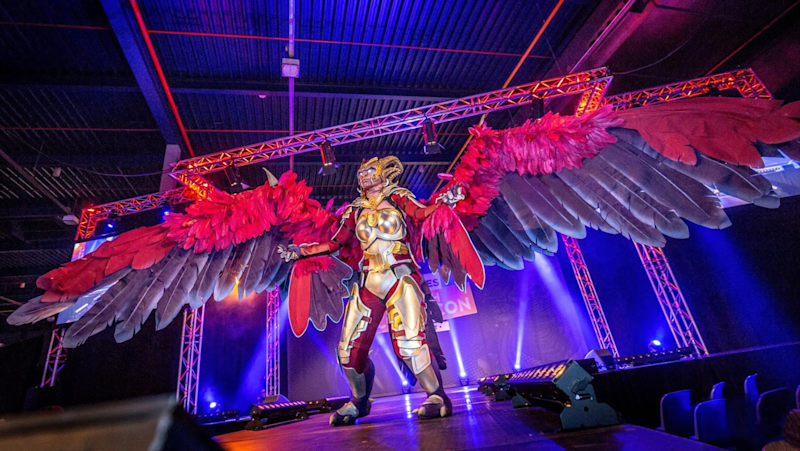
“I thought, hey, what if I could use the 3D modelling design and get a 3D printer and make those designs [real], so I can take advantage of my schooling and the prop work and use a 3D printer to combine all that and make it a reality? That’s how I started printing Demon Hunter horns for the costume at that time.
“The Demon Hunter horns got a lot of interest from other cosplayers, so I started printing for other people, started buying more printers, started a webshop, and then started selling more horn designs, masks, and skulls that I designed along the way. Sometimes people would email me saying, ’I want this character; I have this design or character or idea and I’d like to know if you can 3D-print it for me.’ Usually it would be a different horn design or different type of mask design, and I’d 3D-print it for them and then put it in my shop. That’s how most of the items in my shop got there – they’re custom requests that I got, and now I sell them in my shop as well.
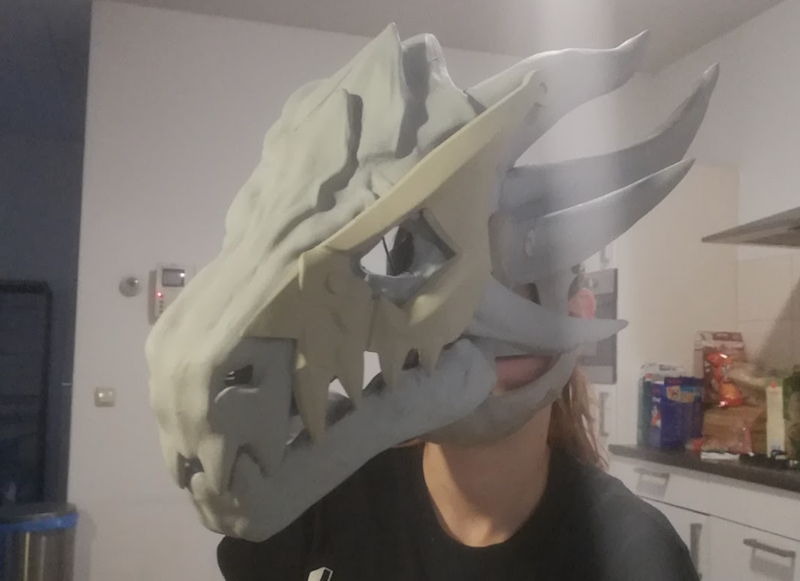
“I do still use [EVA] foam in some my projects, but I’ve been leaning more towards 3D printing for the last year or so, because it’s a little bit more reliable in terms of symmetry of design. You can infinitely adjust your digital design before you touch any kind of material. That is really favourable for me as it’s so much easier to iterate the design before you actually start destroying any of your materials.
“There are still a few designs that I make in foam because it’s better for that use case – it’s soft, it’s lightweight, it’s a little bit easier to bulk up and build bigger parts, because with 3D printing, it starts getting really heavy, and you still have to put in hours of post-processing to get it to look nice.
“My next project will mostly be foam for that reason. And I just got a new laser cutter and I’ll be using that on EVA foam.
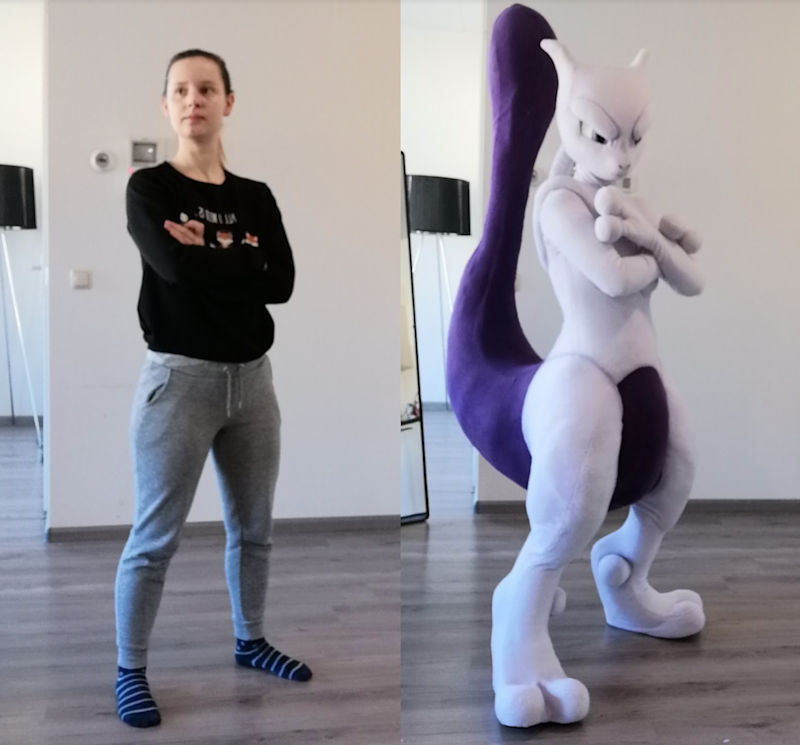
“It’s going to be really cool to be able to cut all those intricate patterns and still keep it digital, but do it in foam. It’s going to be a lot lighter, more comfortable, and easier to assemble, without all the post-processing that 3D printing needs.
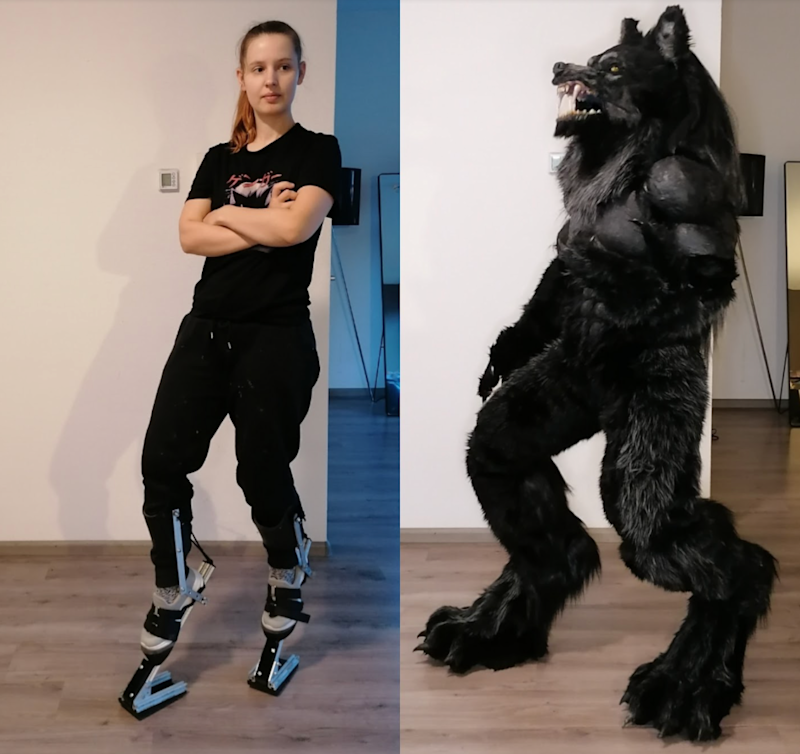
“When you look at other cosplayers who use 3D printing and crafting, most of the arguments against 3D printing in cosplay is that a lot of people use designs created by other people, so they don’t design the costume themselves. A lot of the craft and the work, the thinking and the skill behind it, is taken out of the project if you use someone else’s files, especially if those files are already optimised for printing and you can just load and go.
“At that point it’s just a grind to do the post-processing: somebody else already did the work for you. I’ve done some judging for a cosplay contest before where they specifically took me on as a 3D printing expert, because I know how it needs to be designed, how it needs to be processed.
A smoother finish
“When you do 3D printing, especially on an FDM printer, you get all the 3D-printed lines, and those all need to be smoothed away. If you, as a judge, can see that something was 3D-printed, if you see the lines, and any other 3D printing artefacts, then you know that they haven’t put in the effort to make it the desired finish that you’re looking to achieve; especially if you’re trying to do a metal finish, it really needs to be smooth.

“It takes so much time to do the sanding, because most of it has to be done by hand. I’ve tried a lot of multi-tools and bits and all that kind of stuff, but by hand is usually still the best. No matter how much filler you use, you still need to do the sanding. There’s still a lot of elbow grease to be done if you want to avoid the 3D-printed look.
“Cosplay has got lots bigger in the last few years, especially with the international community stepping up with tutorials and videos and stuff that you can order online. A lot of people are getting into it and finding it via the online community.
“Before corona, we had about five to ten major events a year, so every month at least there was an event to go to, such as Comic-Con. You would always see cosplayers there, and almost everybody would be dressed up in some way. There would be tens of thousands of visitors for Comic-Con.
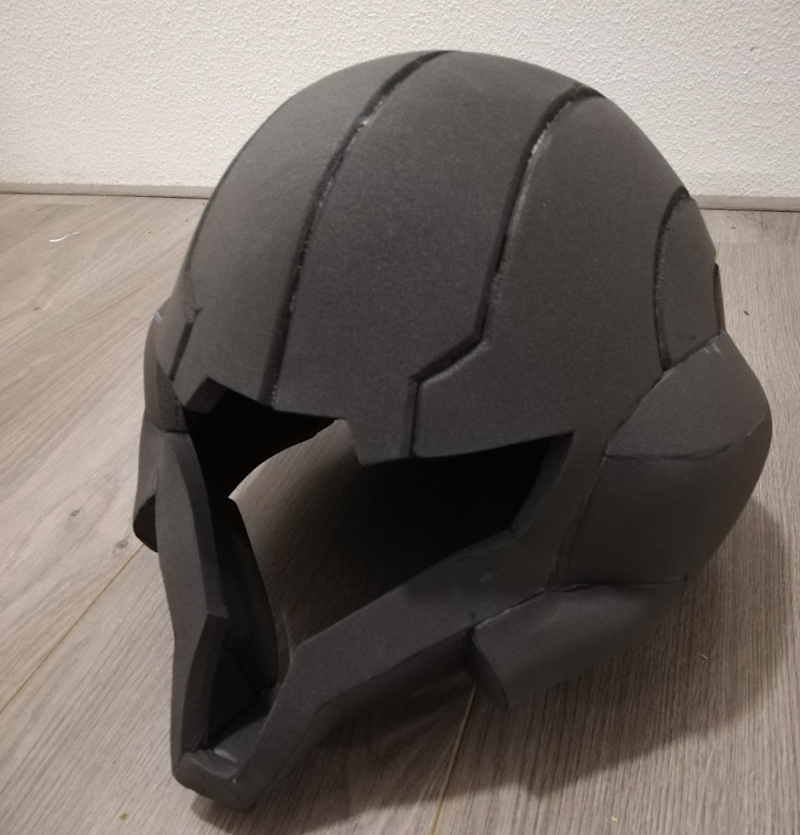
“The designs in games are absolutely perfect for cosplayers; they’re so impressive, there are so many different elements that you can use to show off.
It makes for some really great costumes. The Monster Hunter costumes are fit to your character, so you don’t have to make a complicated monster – it’s just armour with extra extravagance. It’s not like LARP [live action role-play] where you get a boring flat helmet. There’s always a fun discussion between LARP and cosplay, because for cosplay you use a lot of different materials – you want to keep it as light as possible but also as crafty as possible, whereas in LARP they use the real stuff – metal and all the real techniques, all the traditional assembly methods they used in the Middle Ages. Whereas for cosplay, we innovate and make new patterns, and new ways to do things the easiest and the lightest way possible while still looking really awesome.
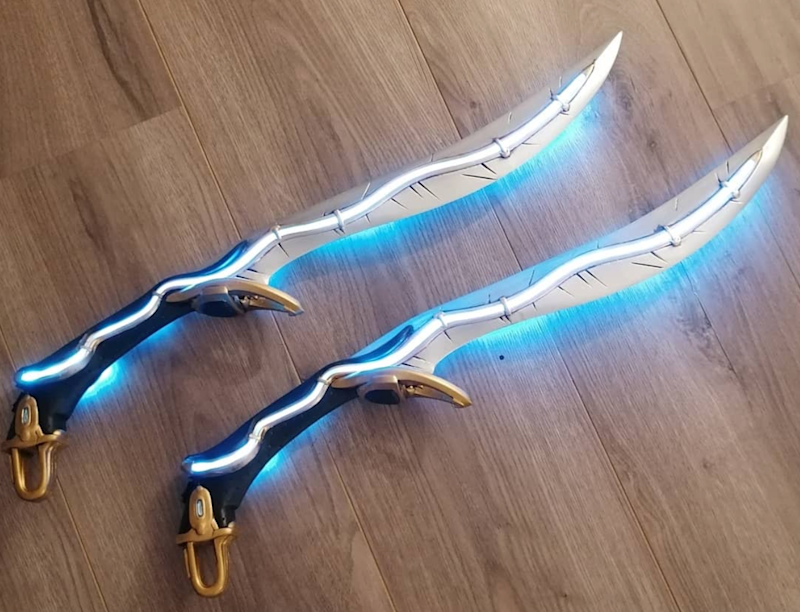
“If you look at a standard 3D printer, they’re all about the same shape, right? They’re all square. [In contrast], Delta printers have a round bed. The nice thing about the Delta printer is that they have a fixed bed, a fixed platform, so extending it is a bit more stable than if you were to try the same things with a bed that goes back and forth.
“You can also use a printer with a standard Ender 3, you can replace the lead screw, you can extend it to twice the height as well, there are some videos on YouTube about that. I’ve seen a couple of people do it with the CR10 from Creality, for example. So there are all the standard aluminium profiles; you can buy them online.
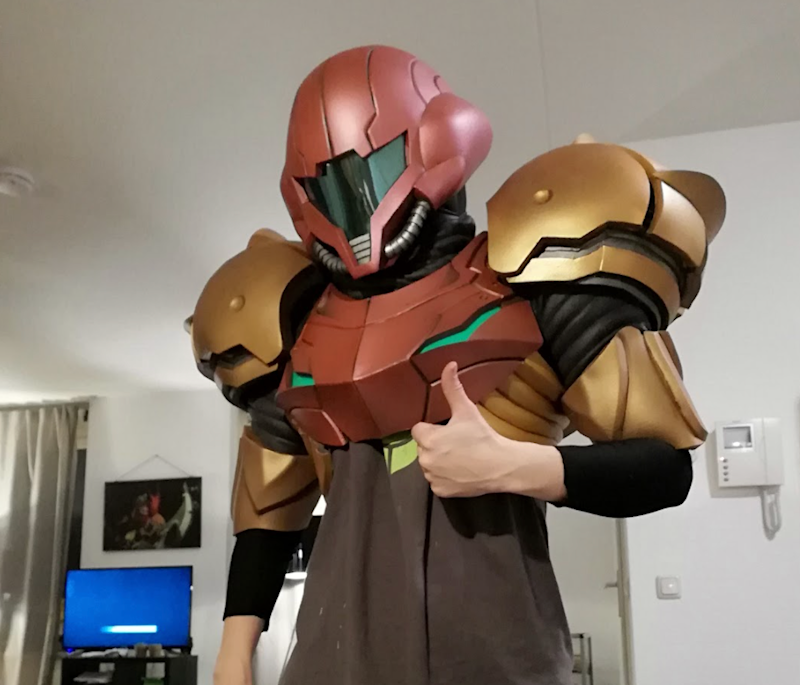
“You get a skyscraper effect if you’re not careful. You have to be careful with what setting you use. It starts wobbling uncontrollably once it gets to the top. You have to print very slowly and make sure you don’t extrude too much plastic and that the nozzle doesn’t scrape on top of the print, otherwise it starts moving around.
“A lot of my prints have an additional pyramid shape at the bottom which gets cut away at the end, so it has a more stable base and doesn’t move as much.
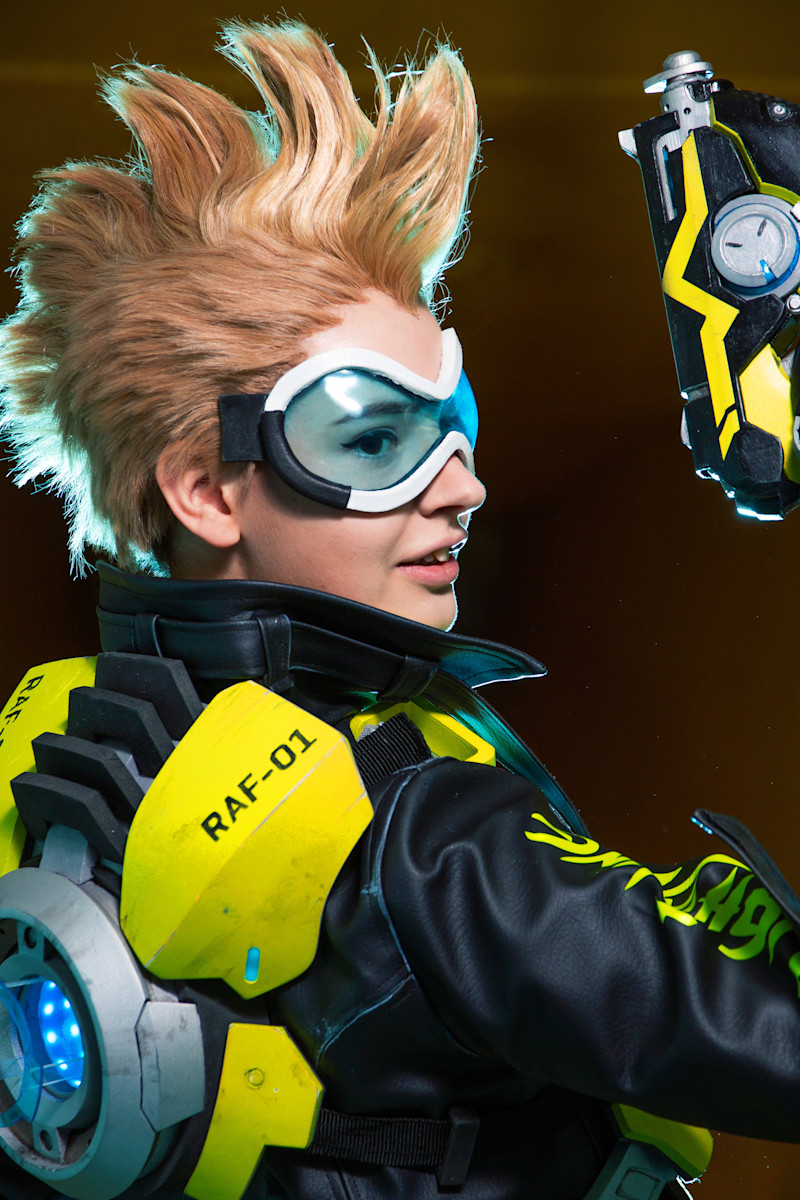
“In 2019, I was making a new iteration of Demon Hunter, and they have really big light-up swords. At the time, I had three 3D printers, I think. There were a couple of ways that I could go about making the swords with the lights in them, but most of them were either going to be very complicated or very expensive or not that great to pick up or implement. The important thing was that it had to be a complete print, or it would not work.
“I researched Delta printers and ended up with an Anycubic Premier Delta printer; it’s a slightly bigger model than the Anycubic Kossel printer, so I thought it would be more stable to use. I bought new profiles for it that are 1.5 metres long, I replaced all that, and now my Delta printer can print up to 1 metre in height. I made energy swords from Halo last year, and I made the light-up swords for my Demon Hunter costume.
“I also made a full-size model of myself on that printer to use as a custom mannequin. The legs were printed in one piece each on the printer. It was really convenient for my mannequin; I put in a larger nozzle so it would go faster, and it pushes quite a lot of plastic. The mannequin torso was a 24-hour print, and the legs were only eleven hours. They’re hollow; I poured expanding foam into the cavity to fill up the space for a really low cost, so it worked really well.
“It’s been very useful for my last project, and I’m definitely going to use it for my next projects as well.
“The stilts I incorporate into my cosplay are also made of the same aluminium profiles that I used to extend the 3D printer. I don’t really have construction tools in my house – I just have a regular jig-saw, a multi-tool, and a drill, so that’s all I have. The way 3D printers are constructed, they have sliding nuts and specific sizes of holes drilled for bolts.
“And I thought, ‘I could do that’. I’ve used wood before for stilts, which works, but wood gets bulky and heavy. The aluminium is great for that. With sliding nuts, for instance, I can customise the placement of my foot: I can move it further up or down for more comfort whenever I want to. I can add any extra parts for the stilts whenever I need. For example, I have some Velcro bolted to it right now so I can attach feet, skin, and all that kind of stuff for the costumes I use.
Moving parts
“Everything I know about animatronics is self-taught from tutorials. I just started out with Arduino for the NeoPixels so I can download a couple of patterns, rainbows, etc., and install that in my props. And I also use DC motors from radio-controlled cars before.
“It was really nice, because they have a set rotation, a set rpm, and they keep rotating after you turn them on. After that, I started using servo motors because they are a little bit more controllable. For example, I used the servos in combination with my 3D-printed designs to create the links that open the eyes of an animatronic wolf’s head that I made, and shut them again. I watched a lot of linkage tutorials – common applications such as umbrellas and litter pickers opening and closing – to see how they work. If you pay attention to what is around you, you can see how those things move and how you can transfer that to your own projects.
“It’s really cool to think about the real world and to see how much you can get away with. How do I place a motor there? How does it move? How much strength does it need to move it, and can I still fit in it?
“And then I use the Arduino Nanos to motorise them and do a lot of trouble-shooting with how much the servo needs to move in order to get the desired effect. Arduino is really convenient because you can trouble-shoot and make a new prototype if it doesn’t fit. For the servos, it’s pretty much the same as NeoPixels: you have a plus, a minus, and a data cable where the input goes. And then there are a couple of standard sketches for Arduino in the example menu… Basically, you can adjust all the parameters in that sketch and it already works, so it was really convenient.
“To move a servo is not that difficult: all you do is plug in the wires in the right place and then a piece of example code, you press Start, and it works.
“Before I started looking into it, I was really intimidated – it gets complicated when you start to make custom patterns for a certain costume, or you want to make a sensor or something. But if you have just standard movements, thankfully it isn’t hard to adjust a few parameters.
“Adafruit has a really excellent blog with all sorts of guides and projects. They also have free 3D printer files to make your own swords. You can make a lightsaber from their free tutorials, for example, and the cool part is they have a bill of materials, which includes an accelerometer so that when you swing it, it makes a noise. The tutorial shows you how to connect the accelerometer, how you accept the input of a swing, and then put it into your own prop – not a lightsaber, but maybe something that changes colour when you swing it.
“There’s so much content that you can adapt to your own projects, because they do so much on props and costume. You’ve just got to think about how you can implement their version of a lightsaber into your own prop or costume, get it set up, and adjust the parameters for your own projects.”







